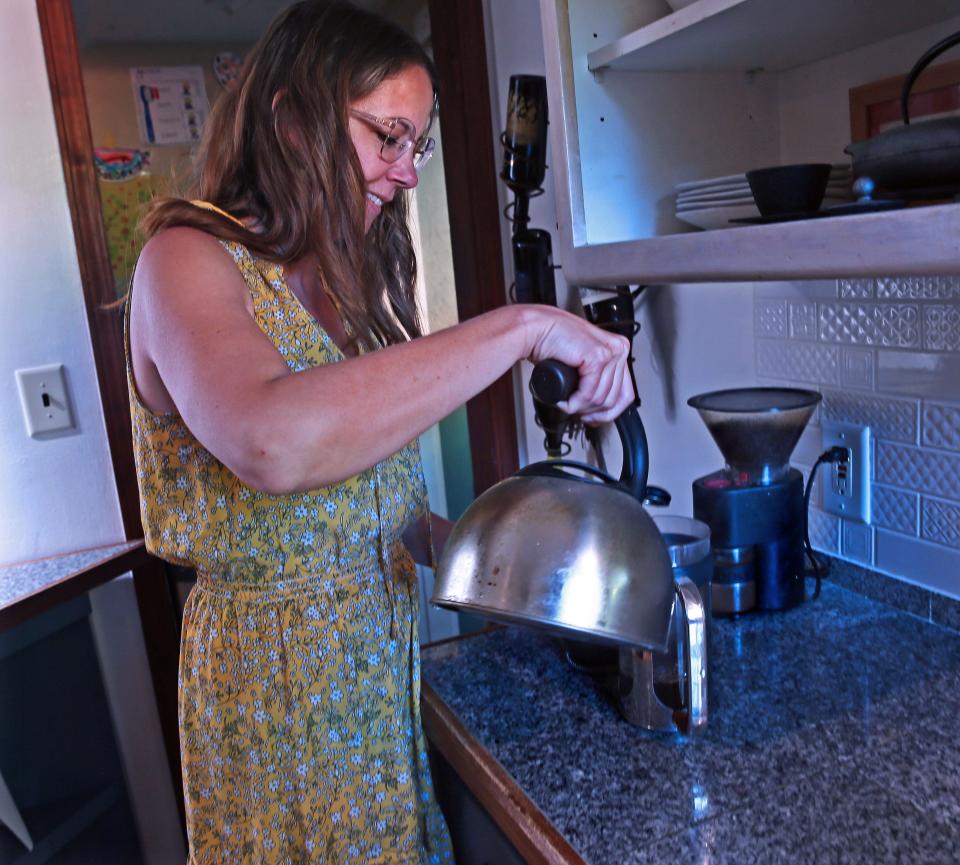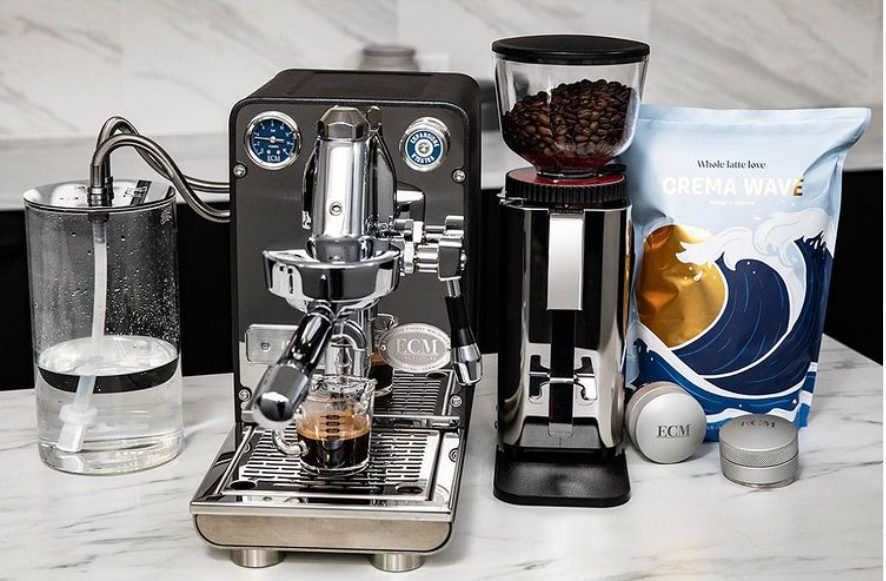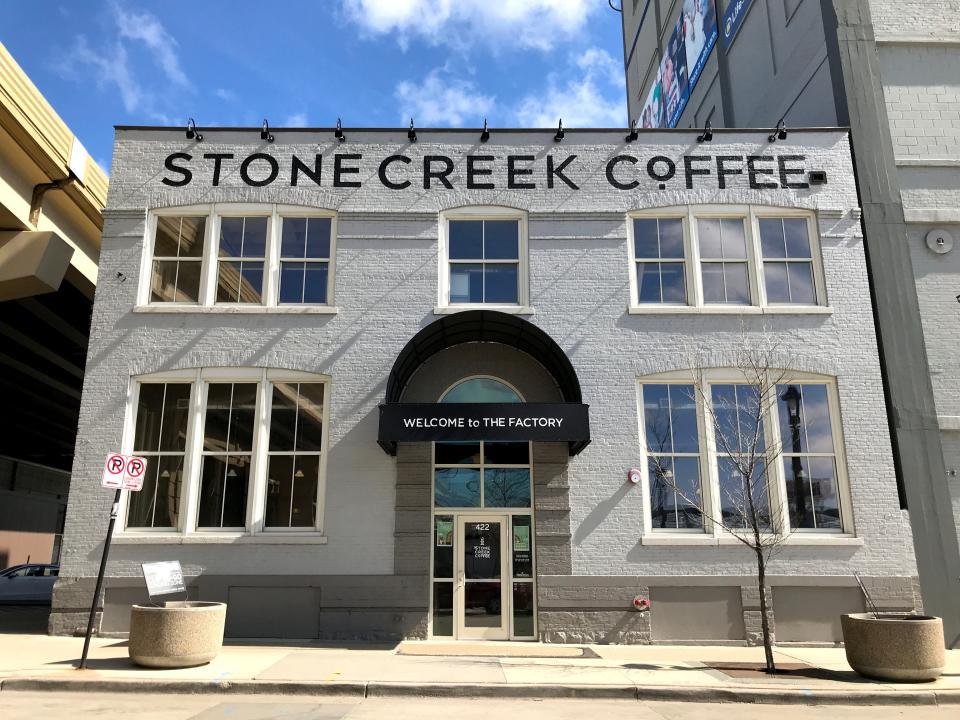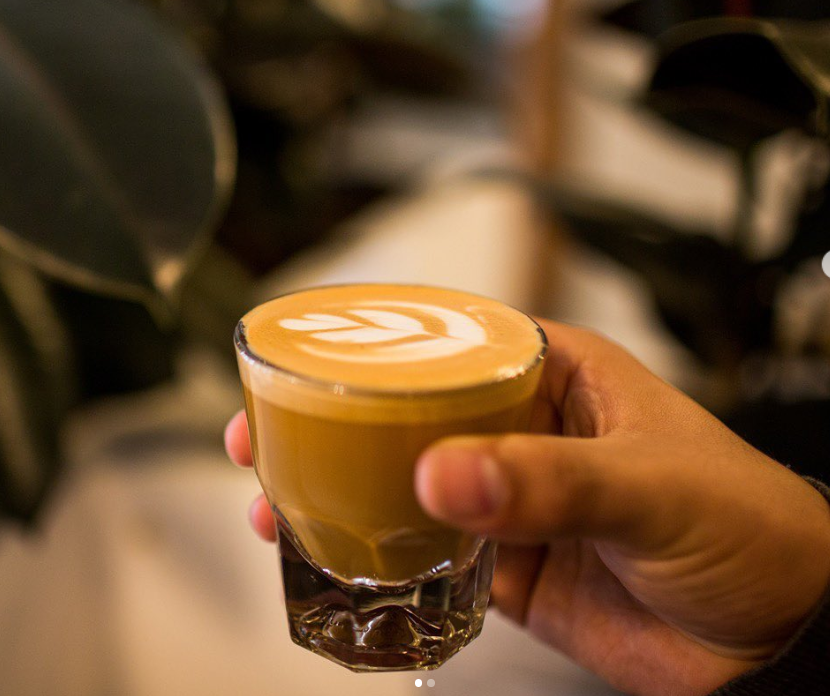COVID changed our coffee culture, if not our love for the drink. Here's how.

Coffee houses have been a place for people of all walks of life to meet and mingle dating back to at least the 15th century. While most Americans have their first cups of the beverage at home, pre-pandemic studies showed up to 75% of workers enjoy at least one cup of joe at work each day.
From coffee breaks at work as a chance to interact with co-workers to the history of coffee houses as meeting places, coffee has played a role in how we interact with others.
More Americans choose coffee each day than any other beverage, including tap water, according to a 2021 National Coffee Data Trends survey and data report. Two-thirds of those surveyed said they’d had coffee in the past 24 hours, and it’s estimated that Americans drink 517 million cups of coffee a day.
The same study found that workplace coffee consumption was down 55% since January 2020.
The COVID-19 pandemic has ensured that coffee culture in the United States has fundamentally changed. Customers may have stopped going to coffee shops because of COVID, but they never stopped wanting their coffee, said Drew Pond, Stone Creek Coffee co-owner and director of development.
“I would agree that coffee is a very community-oriented beverage. It’s also fuel. That fuel use never went away during COVID,” he said.
Instead, customers adapted their coffee routine.
Karen Gill of Wauwatosa resorted to driveway coffee dates with friends during lockdown to try to maintain a distance and be outdoors, but still socialize.
“I just wanted to be with my people,” she said.
Related: Iced coffee tastes great but cooled hot coffee is gross. Why?

Slowed-down sipping
More than 40% of Americans bought types of coffee they had never tried before during the pandemic, and nearly one-third attempted to re-create coffee shop beverages at home, the survey results indicted. One-quarter of Americans purchased new coffee formats and new coffee brewing machines for their home.
Gill, a food education manager and chef who works in health care, didn’t change her schedule much during the pandemic lockdown, but she did find that she had some extra time to savor her coffee. She’s one of the many Americans who added new equipment to their coffee brewing routine. Gill had been what she called a traditionalist — she owned only a drip coffee maker. But during lockdown, she added a French press and cold brew system to her repertoire, allowing her to appreciate her daily coffee in new ways.
French presses gained popularity over the past two years as an inexpensive way to upgrade the home coffee experience. Coffee connoisseurs swear by this method of coffee making, which takes more time but allows for a lot of customization. Additionally, a French press can be used to froth milk and brew small amounts of espresso, so it’s an inexpensive way to make more complicated coffee-shop-style drinks at home.
Coffee for a French press is ground into bigger pieces, allowing more surface area of the coffee bean to interact with and infuse the water with flavor. The grinds are bloomed in the water, instead of water filtering through the grinds. There’s no paper filter, which strains out the natural oil from coffee beans, allowing for French press coffee’s stronger, more robust taste. Each person can decide how long and at what temperature to steep their coffee. There’s trial and error to finding each person’s perfect pot.
The biggest drawback of the French press is the time it takes. Where a drip maker can be programmed ahead of time, making a cup essentially grab-and-go, the 6-to-8-minute wait for a French press steeping was rarely something those dashing out the door could afford. When folks were locked down, it was much easier to find the time, and they found comfort in the process. It feels like a luxury, instead of a necessity for the start of the day.
Charisse Kroner of Wauwatosa discovered the satisfaction of a French press cup in Hawaii prior to the pandemic and found herself luxuriating in the process as she was home with a baby over the past two years and then still making time for it as she got back to teaching.
“The flavors are deeper and richer. I think the whole experience is better. You have to slow down, and you have to boil your water and then grind the beans and then pour the water over the ground beans in the French press and then stir it up. There is a beautiful whitish-brown froth that comes to the top of it and this really beautiful aroma that comes off the top. I feel like that process slows me down a little bit in the middle of a hectic morning,” she said.

Turning coffee into a hobby
Debbie Schnoll Aitzen, of River Hills, said her husband purchased a large bottle of white mocha syrup for her so she could get her favorite beverage without having to go to the coffee shop.
Those are relatively inexpensive and low-commitment changes to the coffee routine, Tracy Schafer, director of sales and marketing at Whole Latte Love, a family-owned coffee and espresso equipment e-tailer in Rochester, N.Y., said the company saw up to a 40% jump in sales of professional level at-home espresso makers over the past few years.
Not only were people now working from home and not able to get their preferred style of coffee, but as the lockdown stretched on, consumer confidence in buying things online rose, Schafer said.
Whole Latte Love added 3-D models of its equipment to its website so customers could see what the equipment would look like on their own counter. The company uploaded videos and had employees take home machines so they could still provide hands-on answers and troubleshooting. Schafer said those changes and the way the economy was forced to shift made it easier for customers to feel comfortable making a more sizable purchase online.
Whole Latte Love also found that it was seeing more repeat customers who would continue to purchase accessories or upgrade their equipment as time went on. Schafer feels like coffee became a hobby for a lot of their customers during the pandemic. From a better tasting cup to perfecting latte art they could share on social media, upgrading their coffee brewing experience was something their customers were able to treat themselves to.
While coffee shops took a hit from the loss of in-store customers, more devastating has been the loss of wholesale business. Pond cited businesses that had previously purchased Stone Creek coffee to serve their employees in the office. Robb Kashevarof, founder and CEO of Valentine Coffee Company, pointed out that many restaurants cut early service and lunch because of the pandemic and staffing issues, so they’ve cut coffee from their menu completely. Labor shortages have limited the number of hours Valentine can keep its doors open, which also cuts into its ability to recoup revenue.


Cafe kindness
Stone Creek, which closed more than a dozen cafes in May 2020, reopened them in May 2021. Pond has seen not only a steady recovery for the business, but also increased recognition and gratitude toward cafe staff.
“I think there's a lot to be said for creating environments where we come together. When we reopened our seating, people really embraced that. There’s just never not a lot of people here. Coffee shops have become the places where you could really connect with people, which is a key part of the human existence,” said Pond. “There’s a genuine thankfulness for what we do. (Customers) have always appreciated having those places, but even more so now.”
That thankfulness has shown up in a substantial increase in barista tip rates, something that happened almost immediately upon reopening.
“The public appreciation for people working in hospitality seems to be more tangibly shown through the tip rates that we see,” Pond said.
For Kroner, who only recently returned to spending time inside coffee shops, having that sense of comfort and care of a familiar cafe back is reassuring. She goes to coffee shops to grade papers for the class she teaches at UWM. A former middle school teacher and mother of two young kids, she’s used to noise and doesn’t like working in silence, but she needs to be away from home to effectively get work done without interruption.
“(The coffee shop) has an energy and a buzz about it that is invigorating and just allows me to focus,” she said.
Forward focus
Looking multiple years into the pandemic, coffee shops are challenged to know what comes next. They’ve had to become adaptable to keep customers and employees safe. Early on, Stone Creek accelerated the rollout of an app that it already had in development. Stone Creek has since updated that app and its website to handle the volume and customizability its customers needed.
The driveway coffee has evolved. Instead of returning to a coffee shop, Schnoll Aitzen said it’s more likely that a friend will stop and pick up drinks and bring them to her house so they can still catch up over coffee without the stress of packing up her kids and ensuring they’ll be entertained while she socializes.
Just 27% of trends survey respondents reported having coffee away from home. Coffee shops may be open and even busy, but business has not returned to pre-pandemic revenue figures.
Pond said Stone Creek’s whole bean sales have declined from the height of mid-2020, but they are still a much larger part of the company’s revenue than they were before COVID-19. He has seen a sizable increase in the sales of food in cafes, which may have to do with returning customers being careful and only wanting to make one stop in their day.
Kashevarof has noticed an increased demand for decaf coffee. He thinks people are mixing their beans and creating half-caffeinated cups to drink throughout the day.
Throughout the pandemic, customers got used to a grab-and-go style of service from their coffee shops. On the one hand, that tends to equate to higher sales numbers as customers are turned over quickly. But it also has eliminated a lot of the cozy comfort that is synonymous with coffee culture. There is a delicate balance in welcoming customers to use the space to work, meet, read and relax while meeting revenue numbers and serving customers who want to get in and get out.
Both companies will continue to try to find ways to bring customers back while fighting supply chain issues, increased paper goods cost, staffing shortages, shorter hours and loss of wholesale business.
******

We're Brew City and Coffee City
Milwaukee was named the 2022 best coffee city by St. Louis-based Clever Real Estate, a residential real estate platform. The designation came in part because the average cappuccino costs only $3.56 in Milwaukee and residents spend just 1.5% of their annual income on their weekday cup.
Milwaukee is the coffee capital of the U.S., serving up the perfect blend of passionate coffee culture and affordability,” the site's report said. It's "where coffee-lovers can get the best brew for their buck.”
The site evaluated the 50 largest U.S. cities on weighted criteria, including:
The average price of a cappuccino in each city.
The number of coffee shops per capita in each metro.
The number of coffee shops per square mile in each metro.
The percentage of income locals are willing to spend on a daily, weekday cup.
The Google search trends for coffee-related terms in each metro.
Sign up for our Dish newsletter to get food and dining news delivered to your inbox.
Our subscribers make this reporting possible. Please consider supporting local journalism by subscribing to the Journal Sentinel at jsonline.com/deal.
DOWNLOAD THE APP: Get the latest news, sports and more
This article originally appeared on Milwaukee Journal Sentinel: Our coffee culture changed with COVID; our love for the drink didn't

